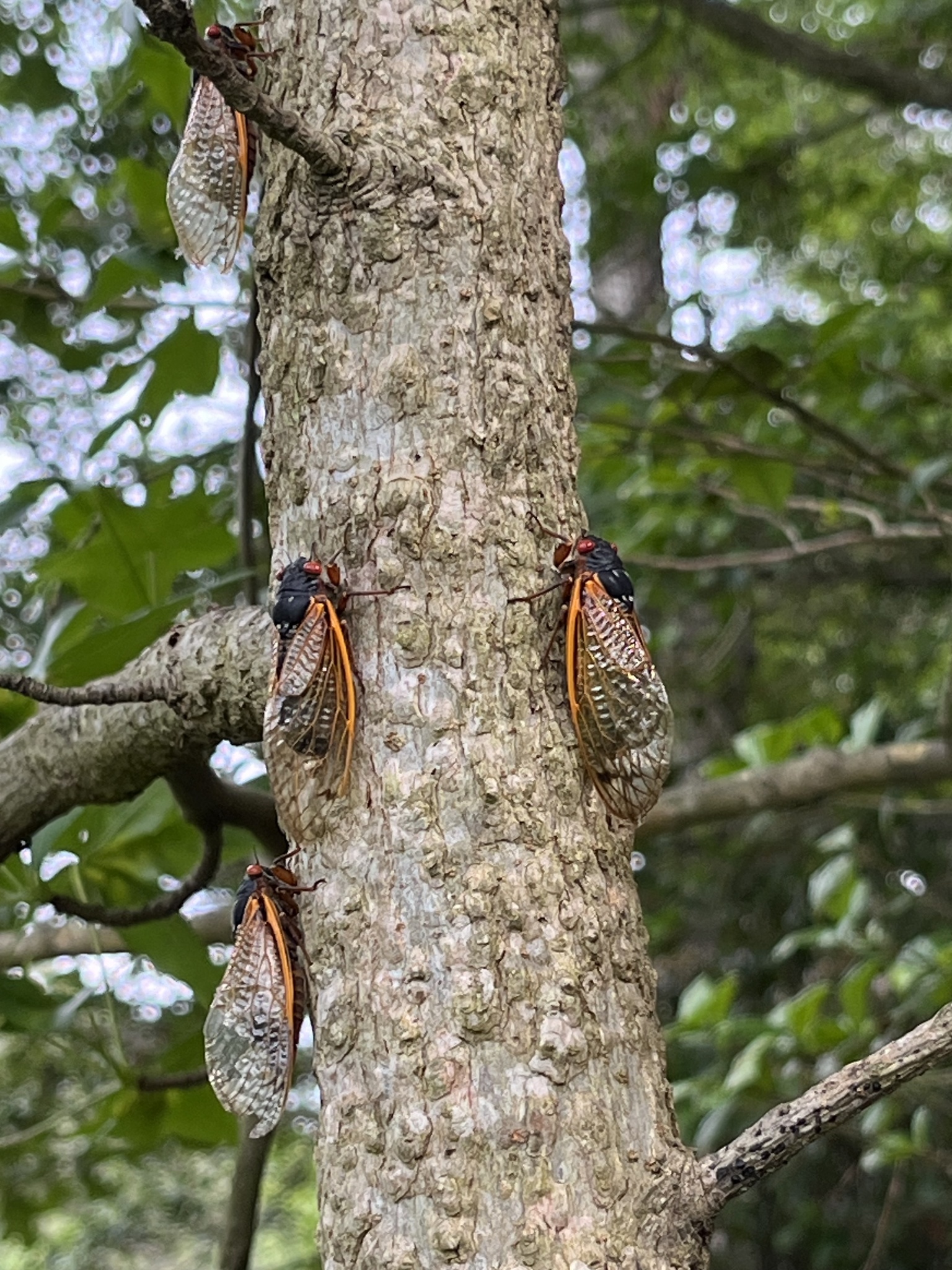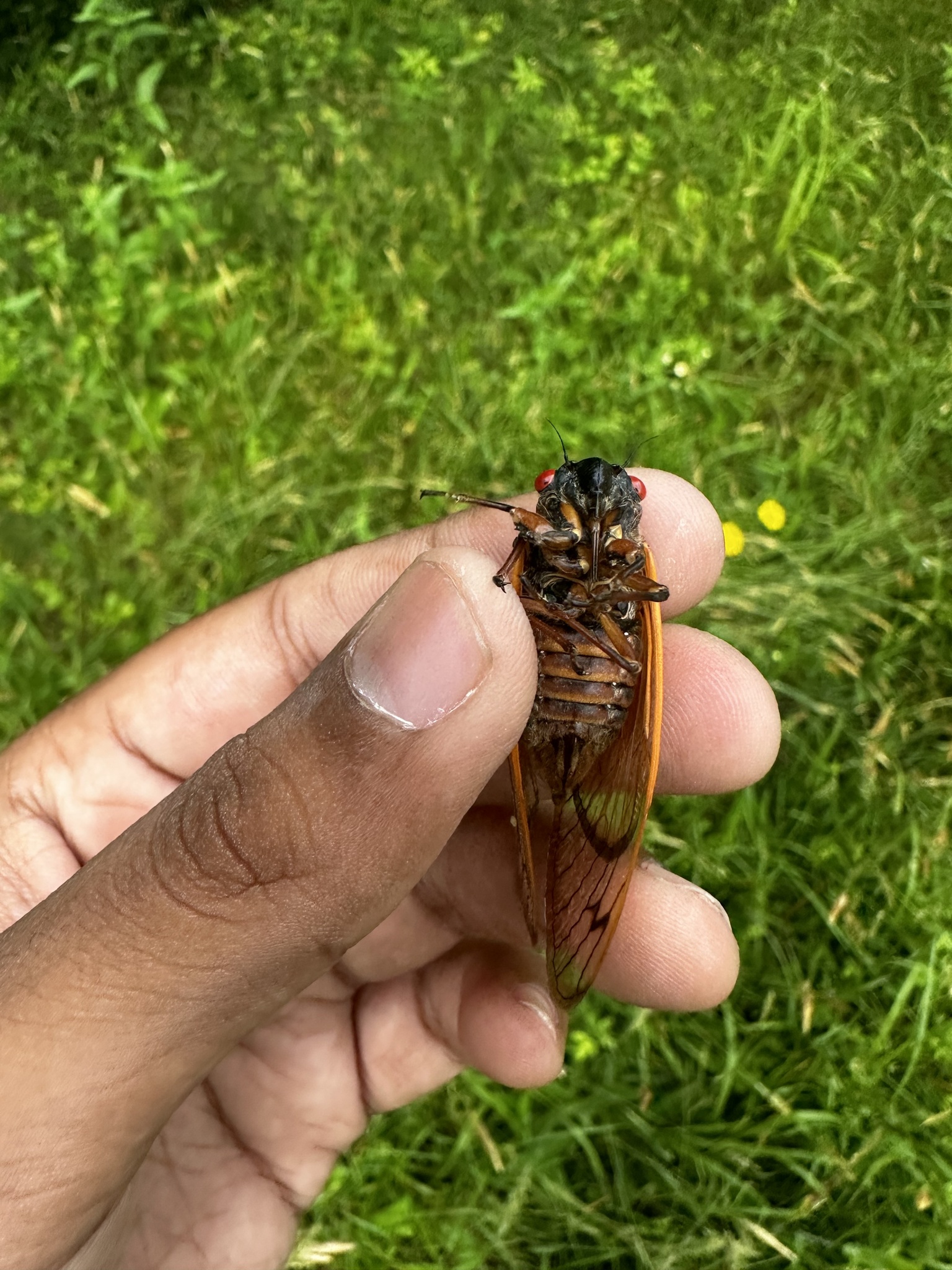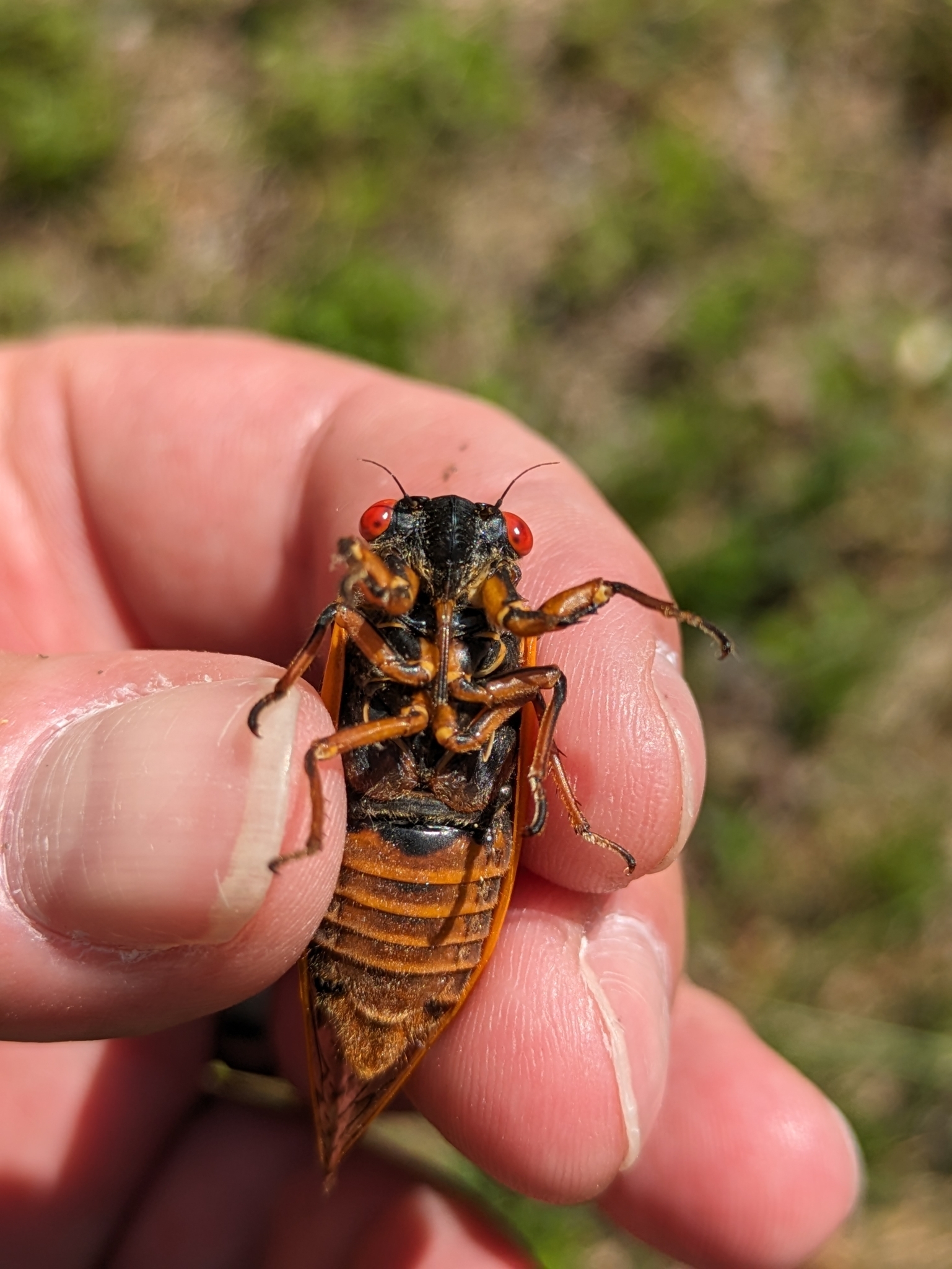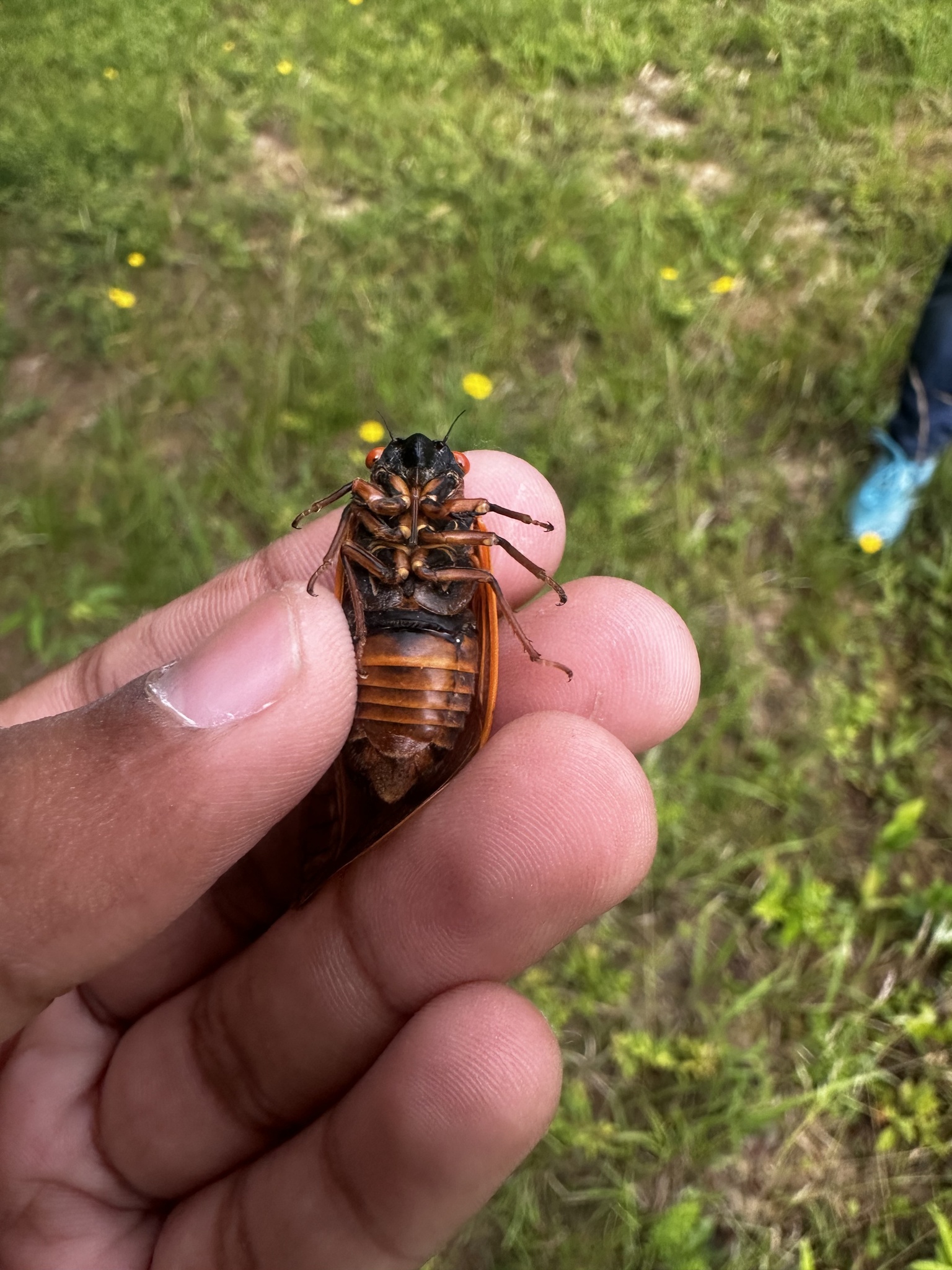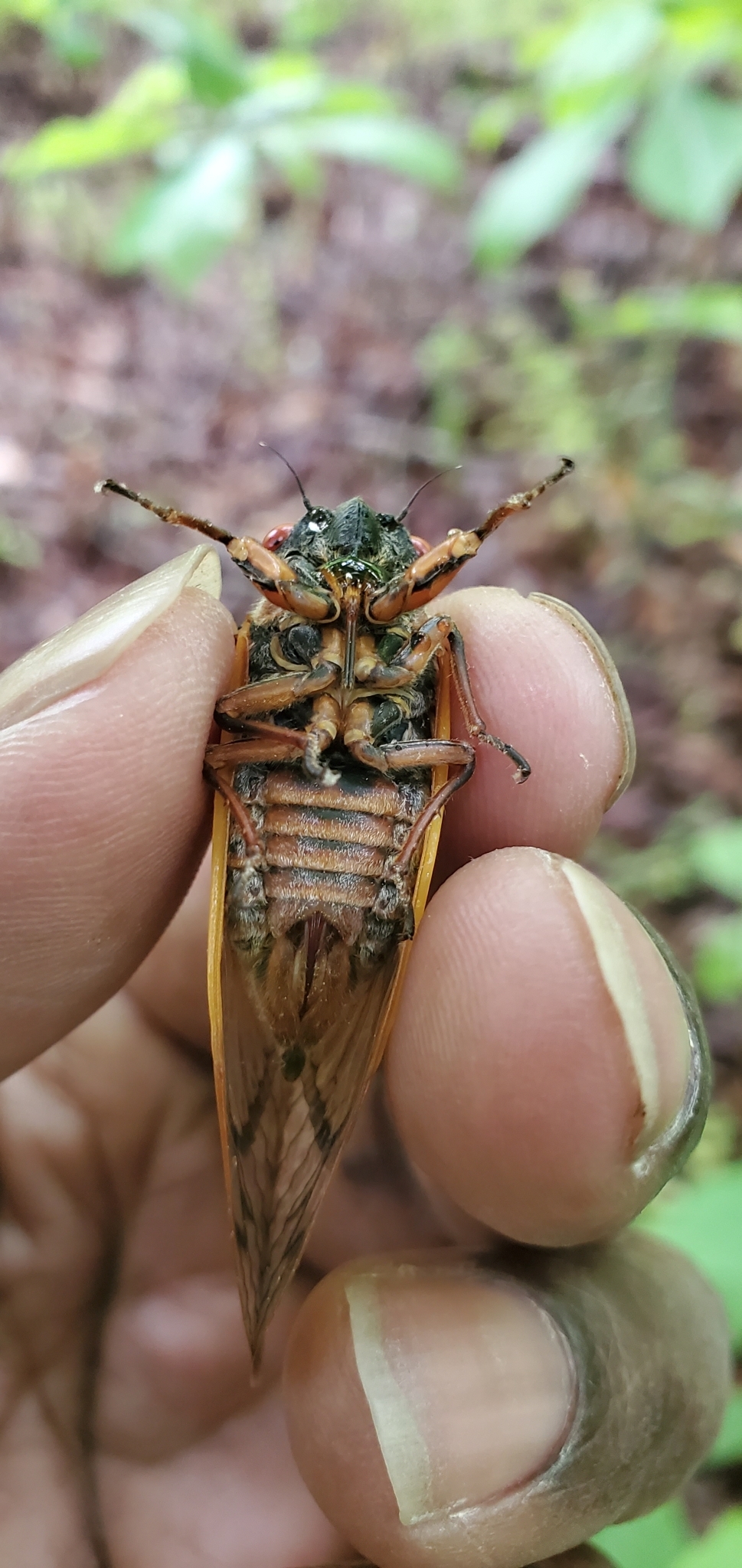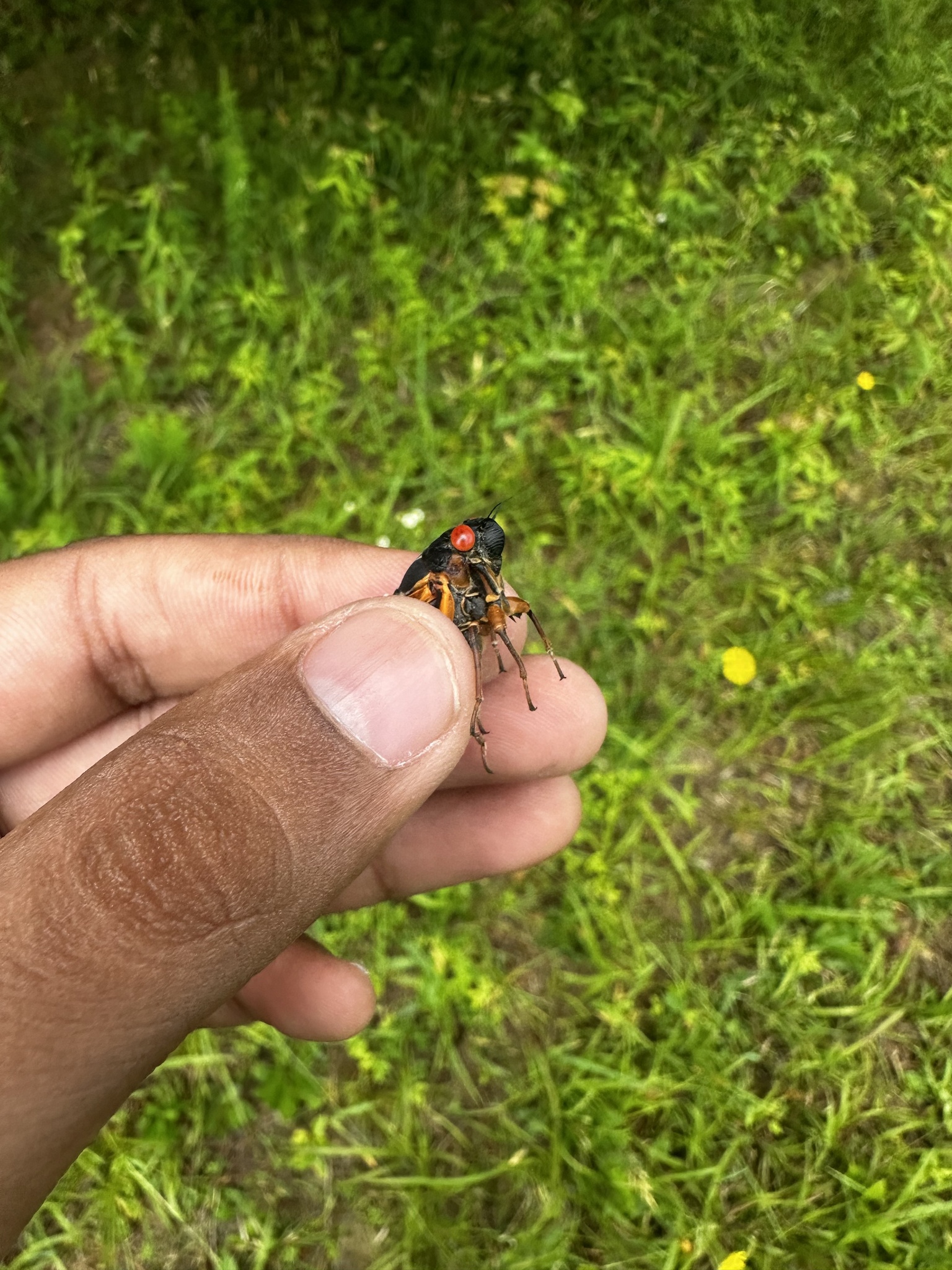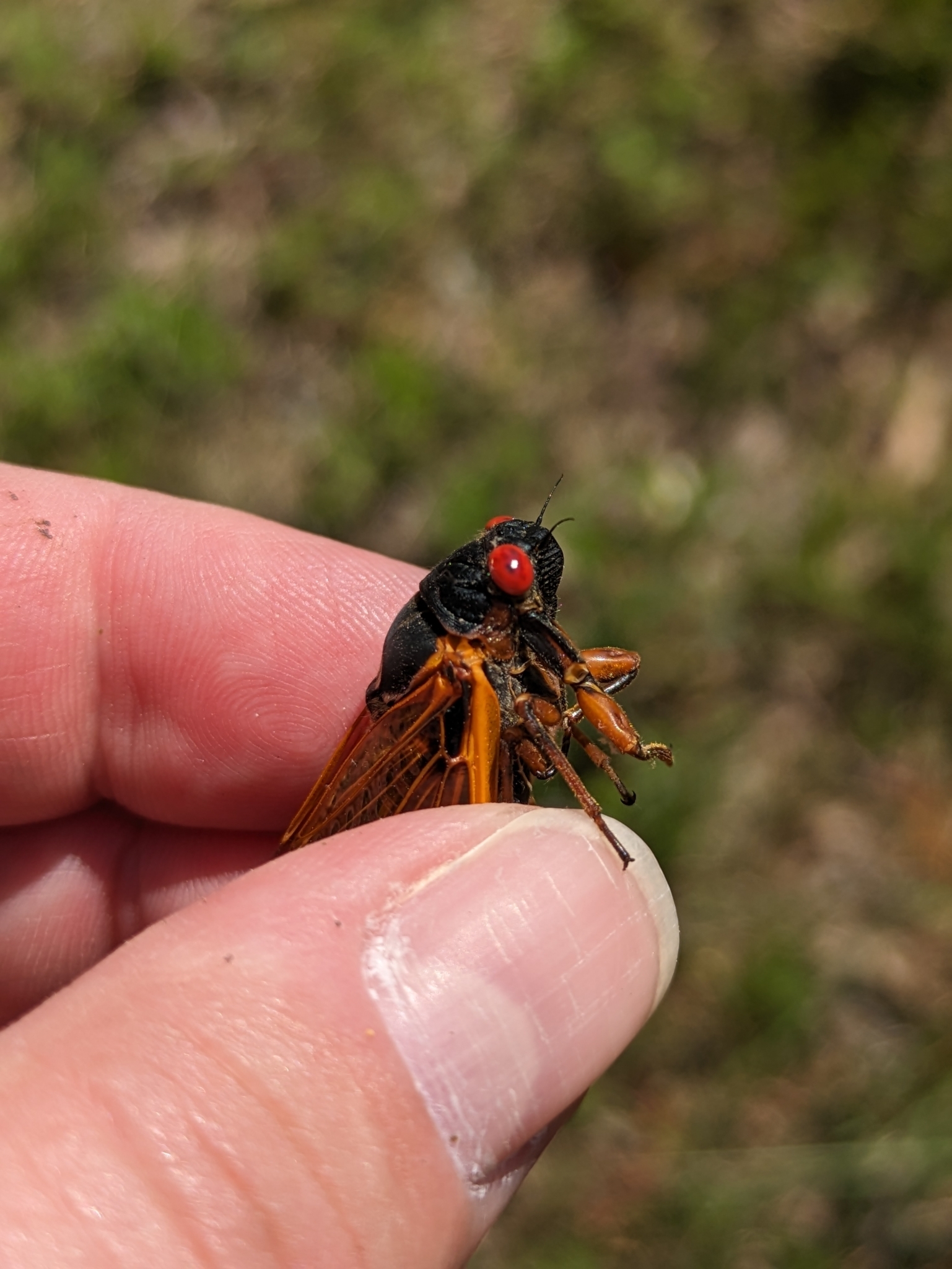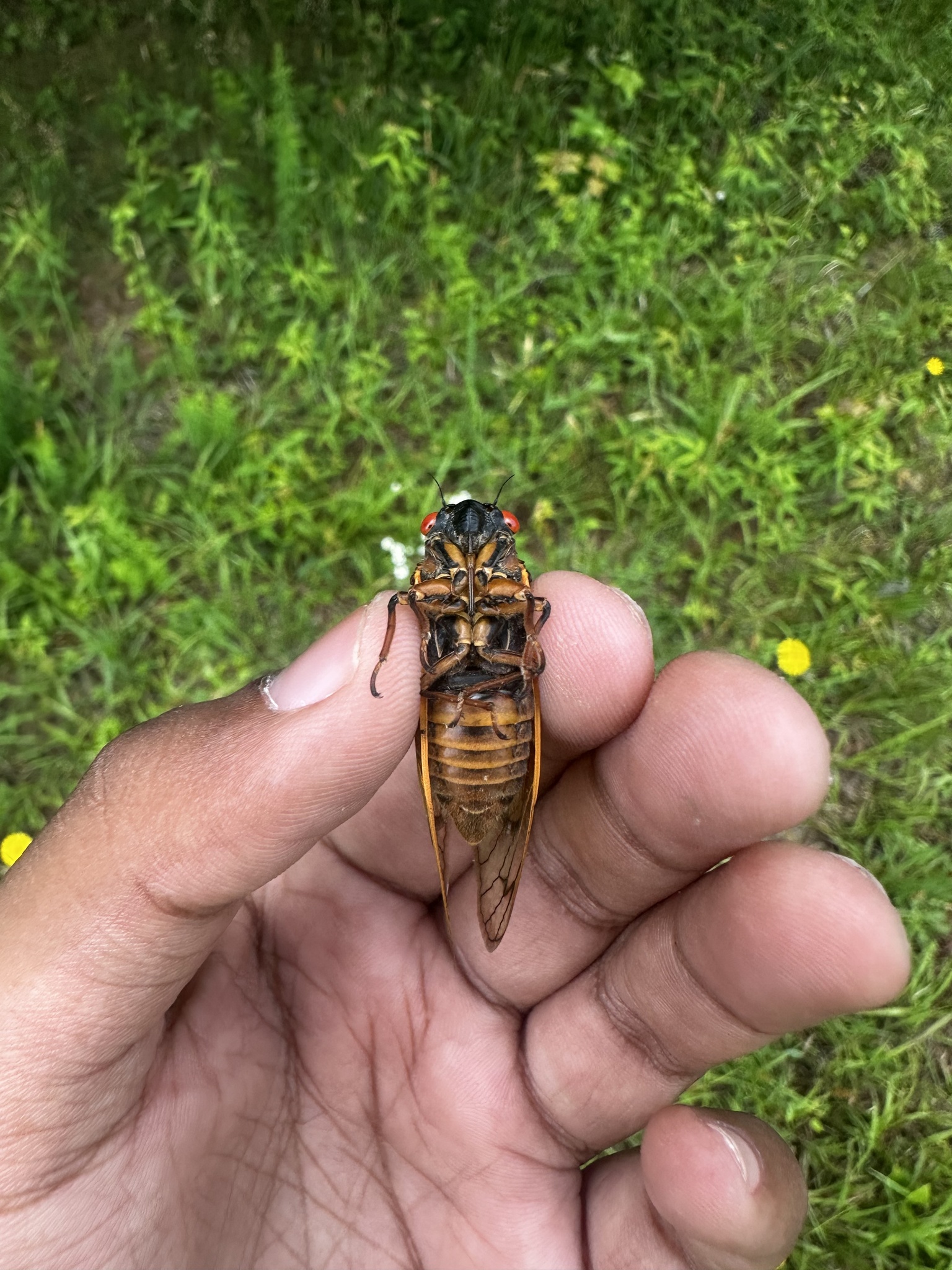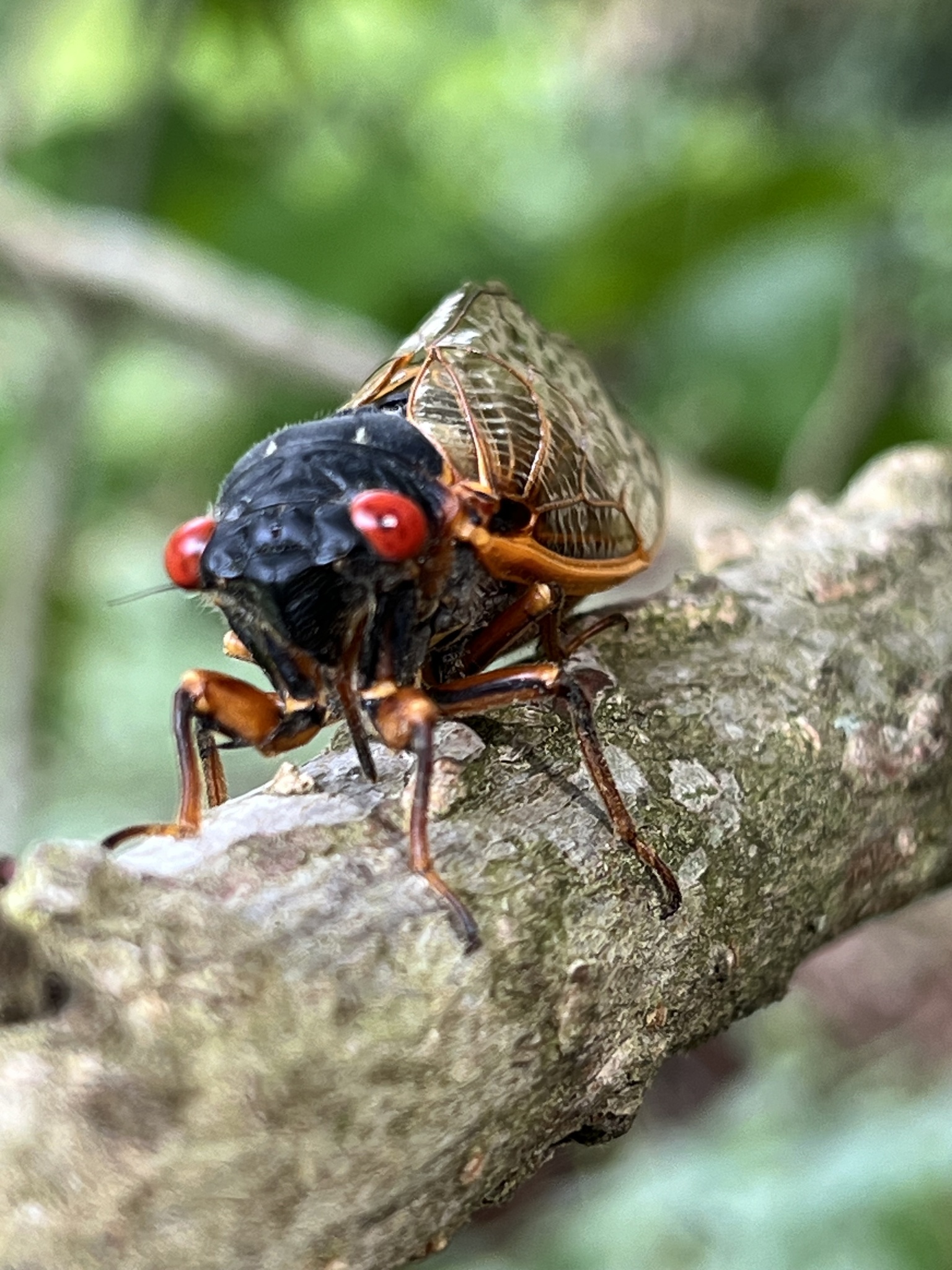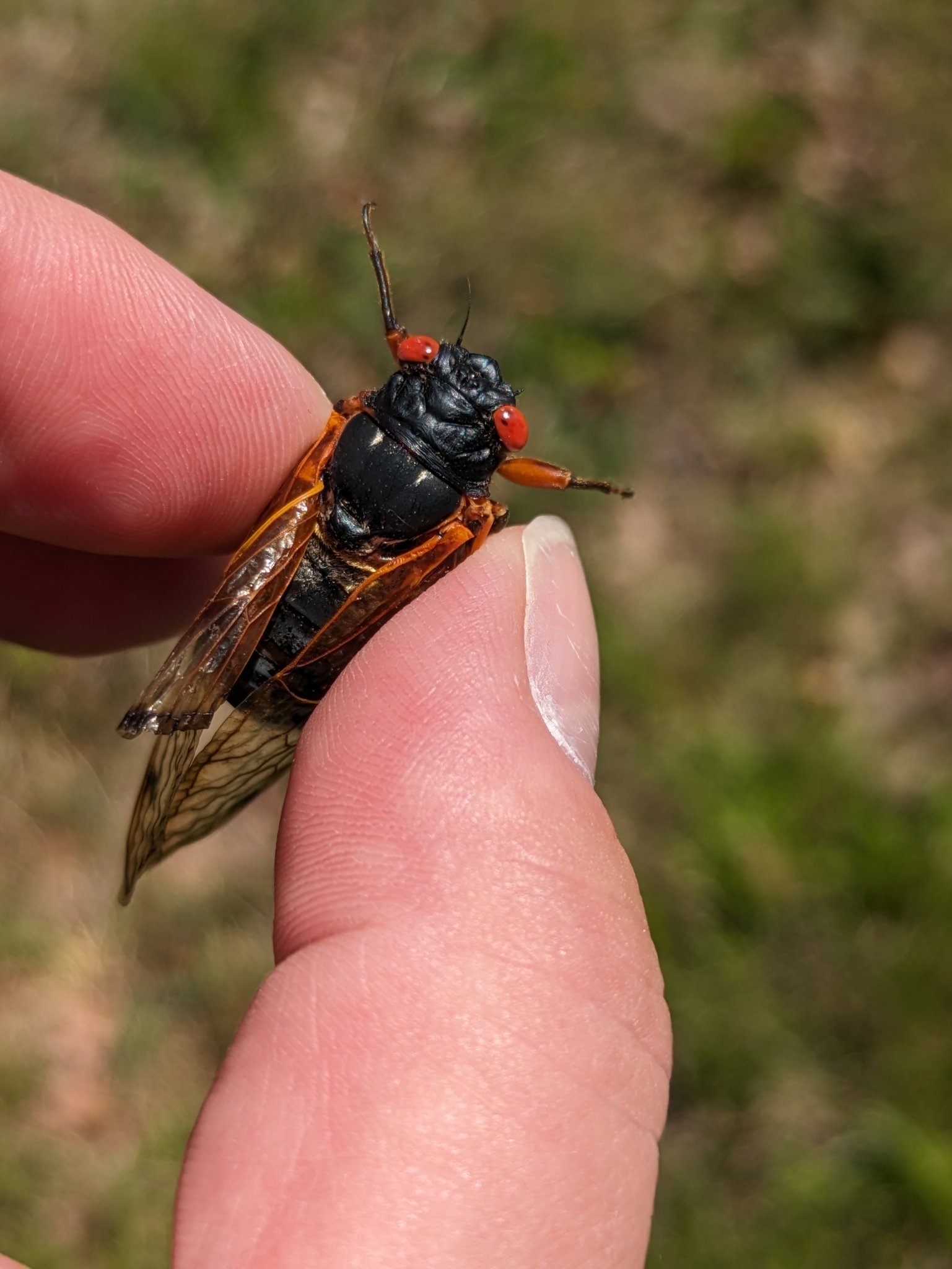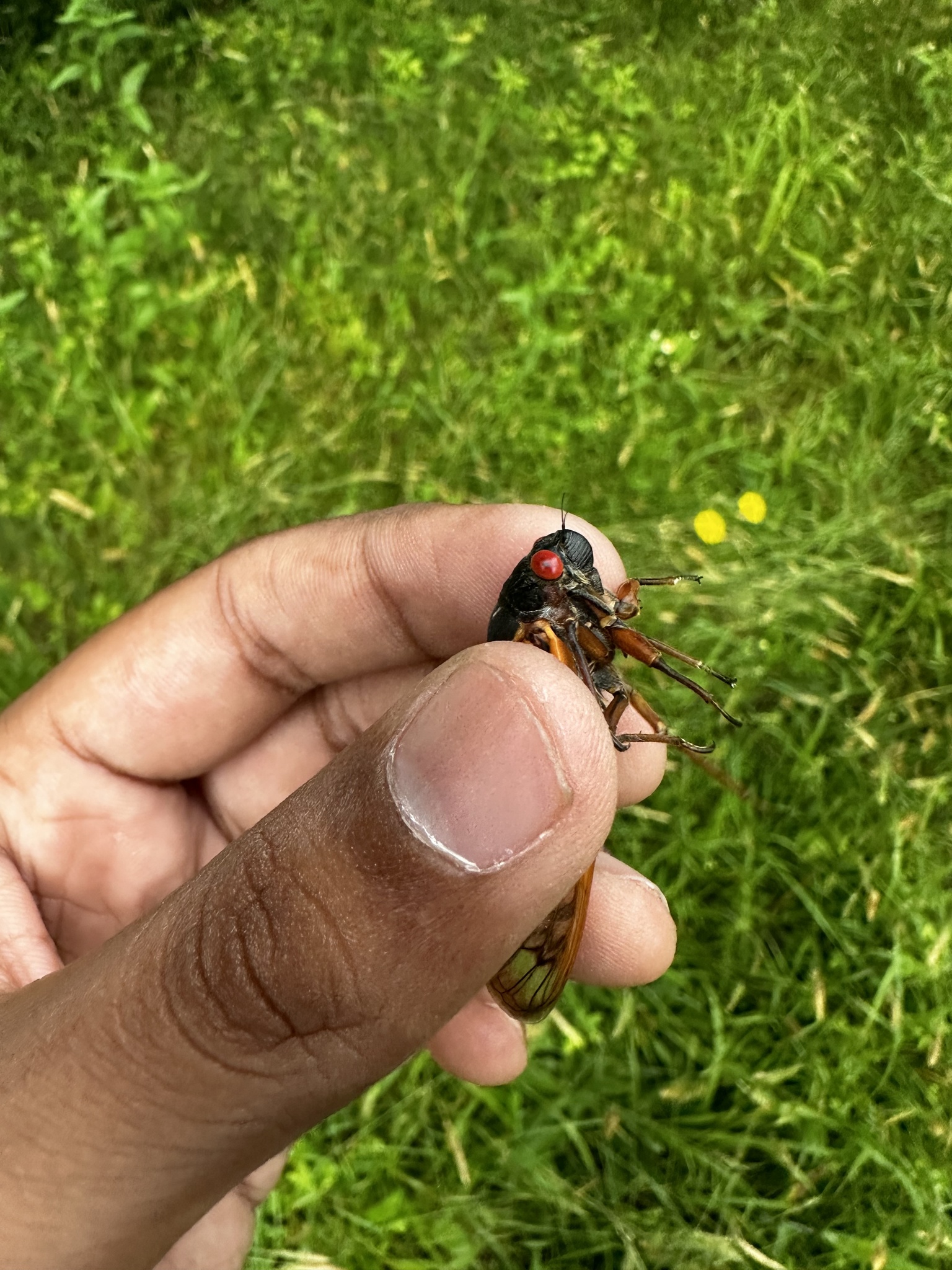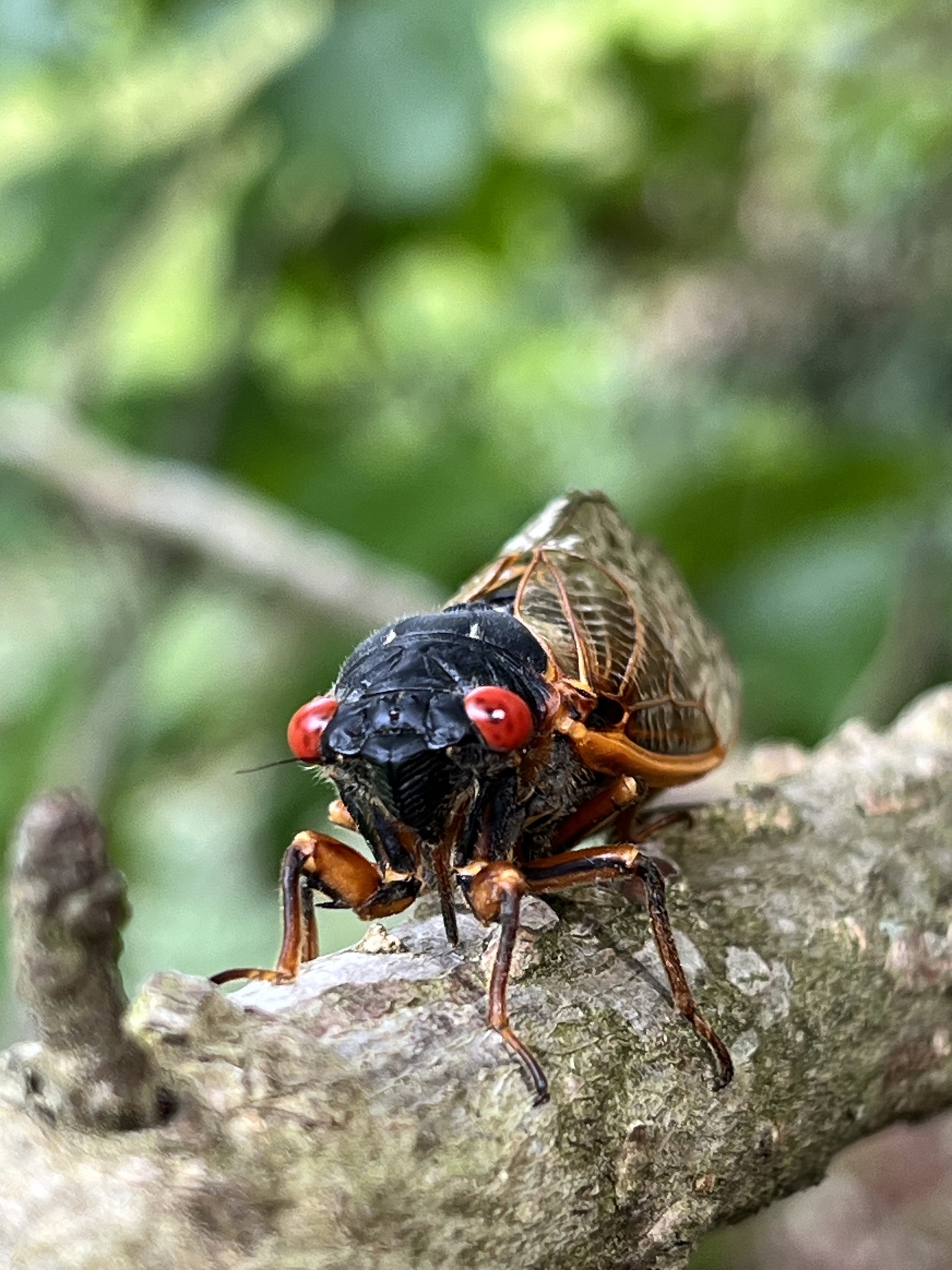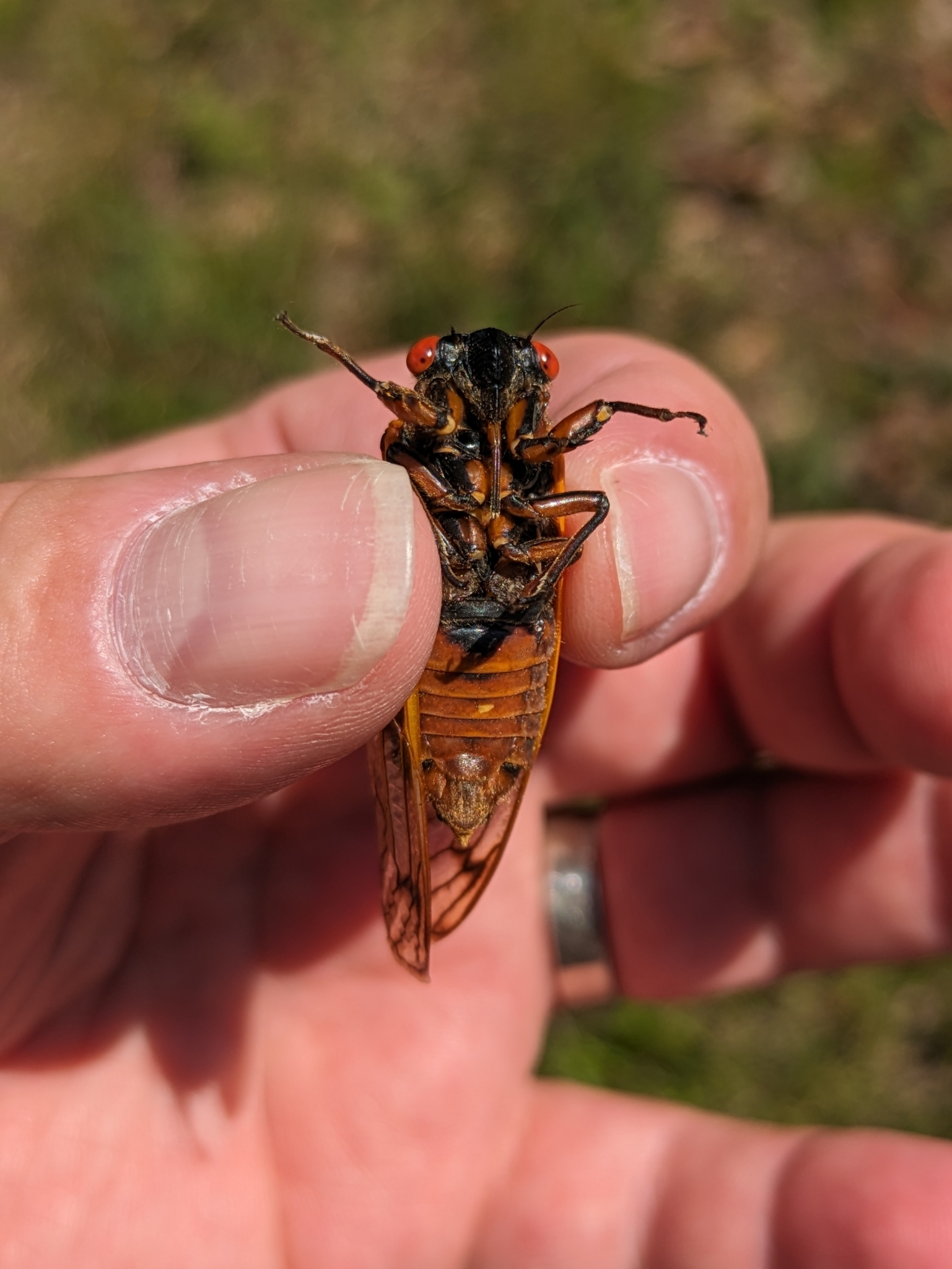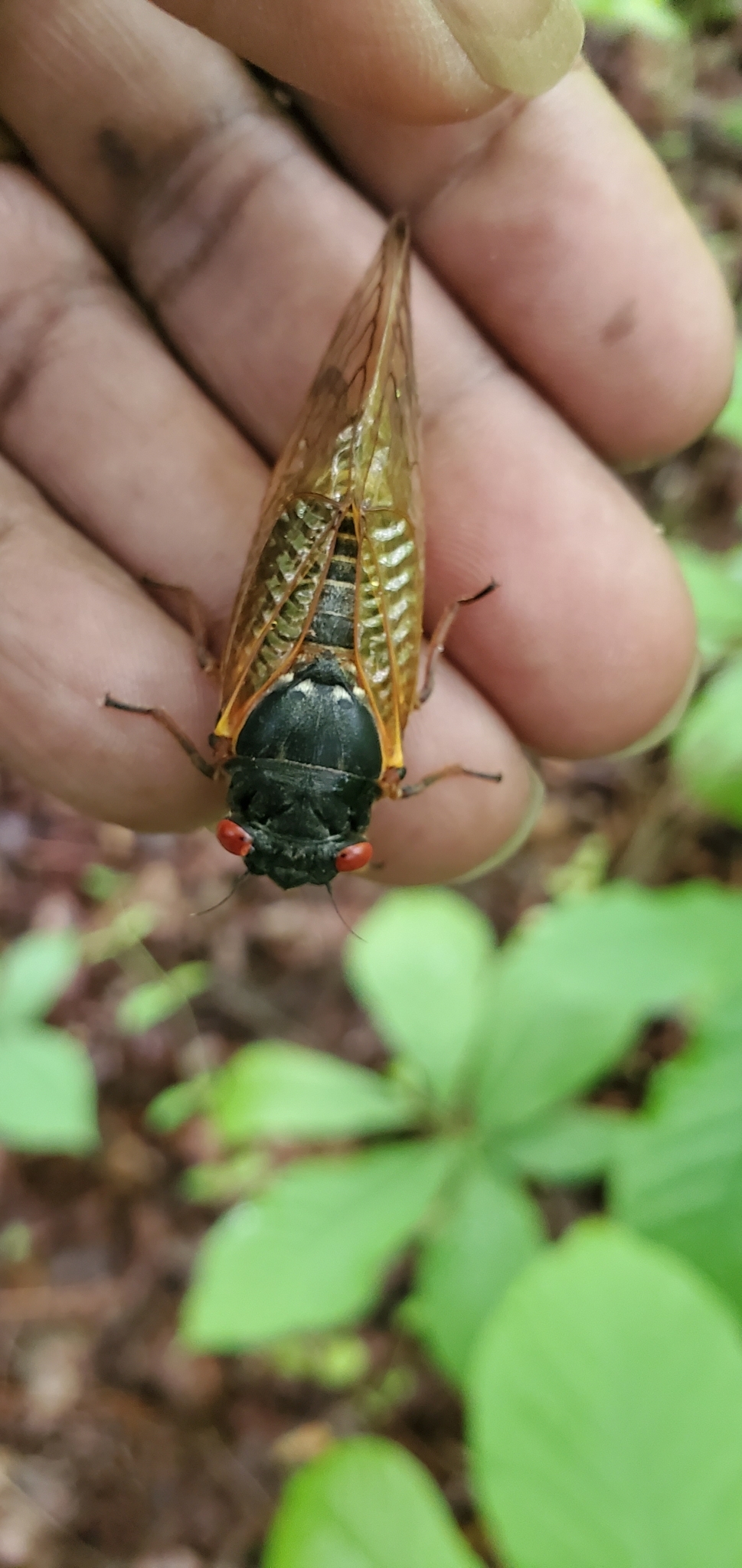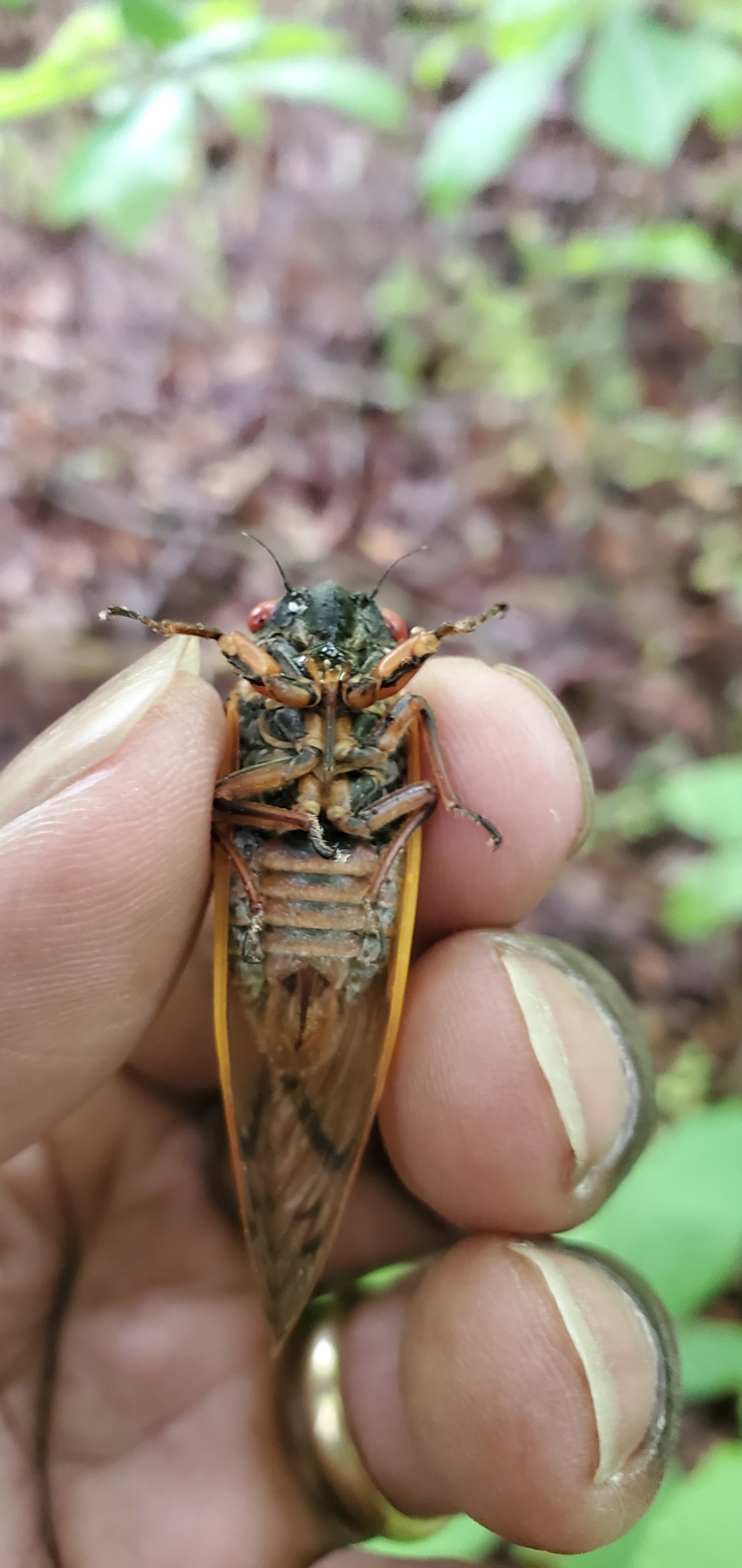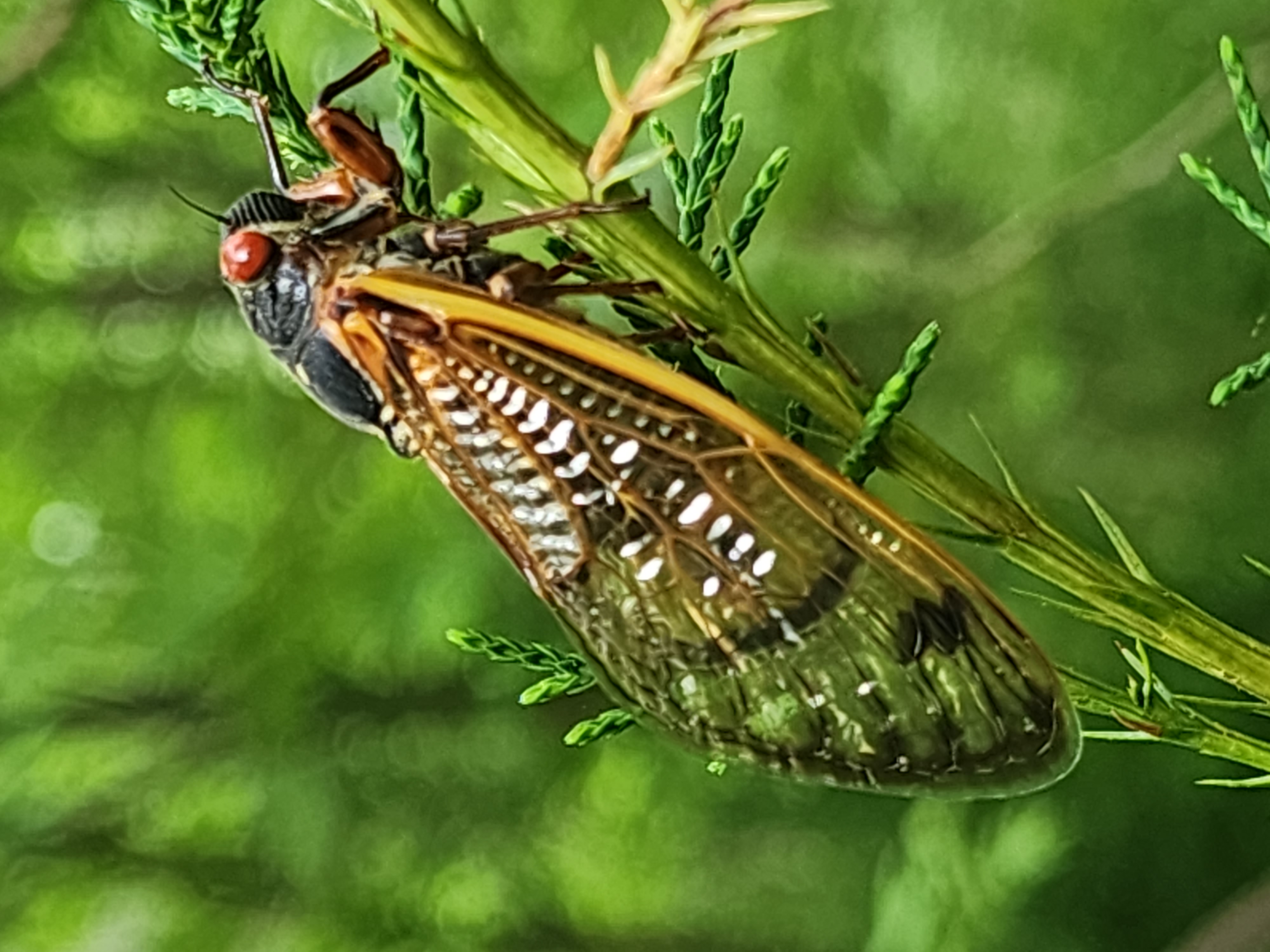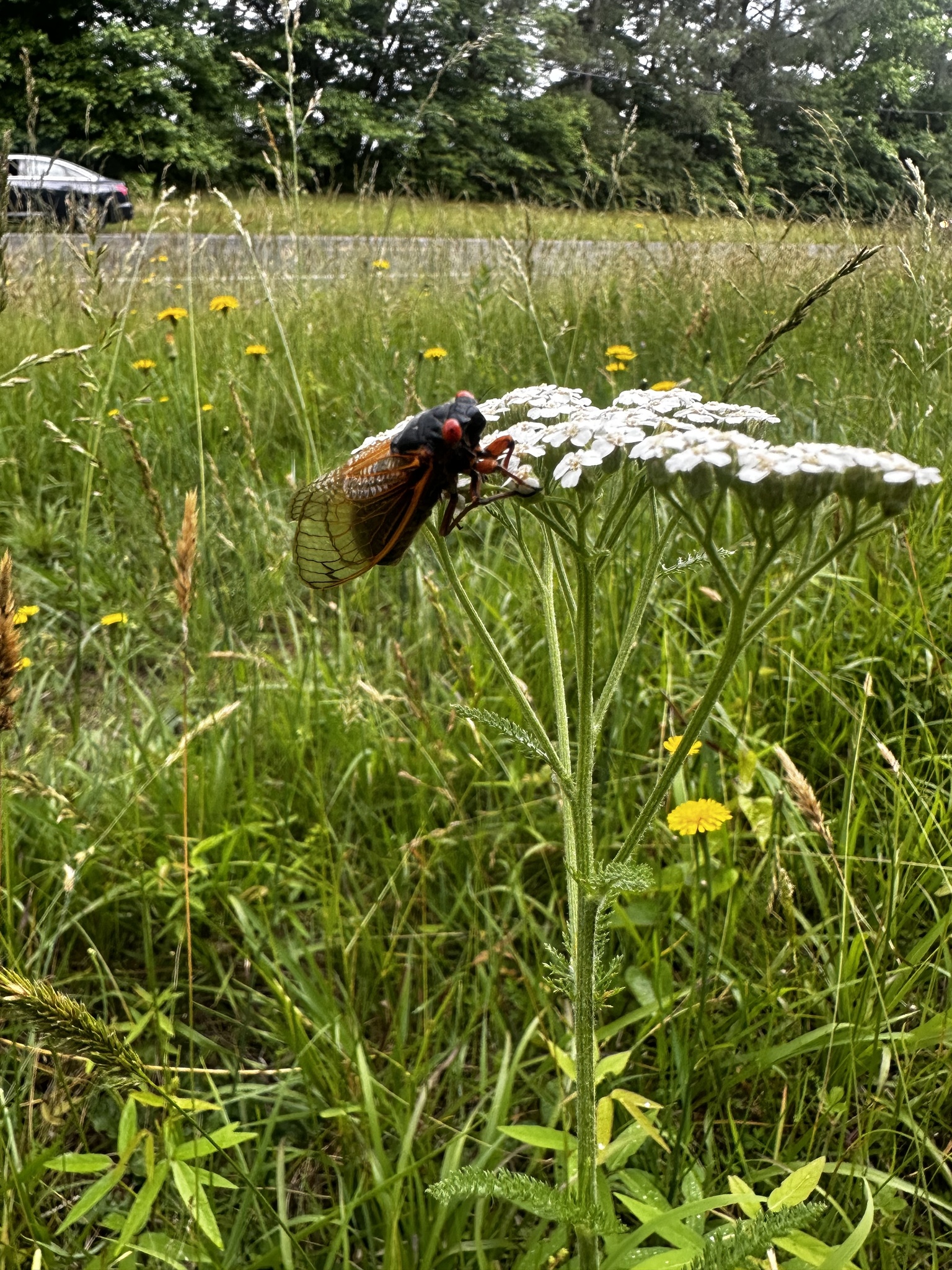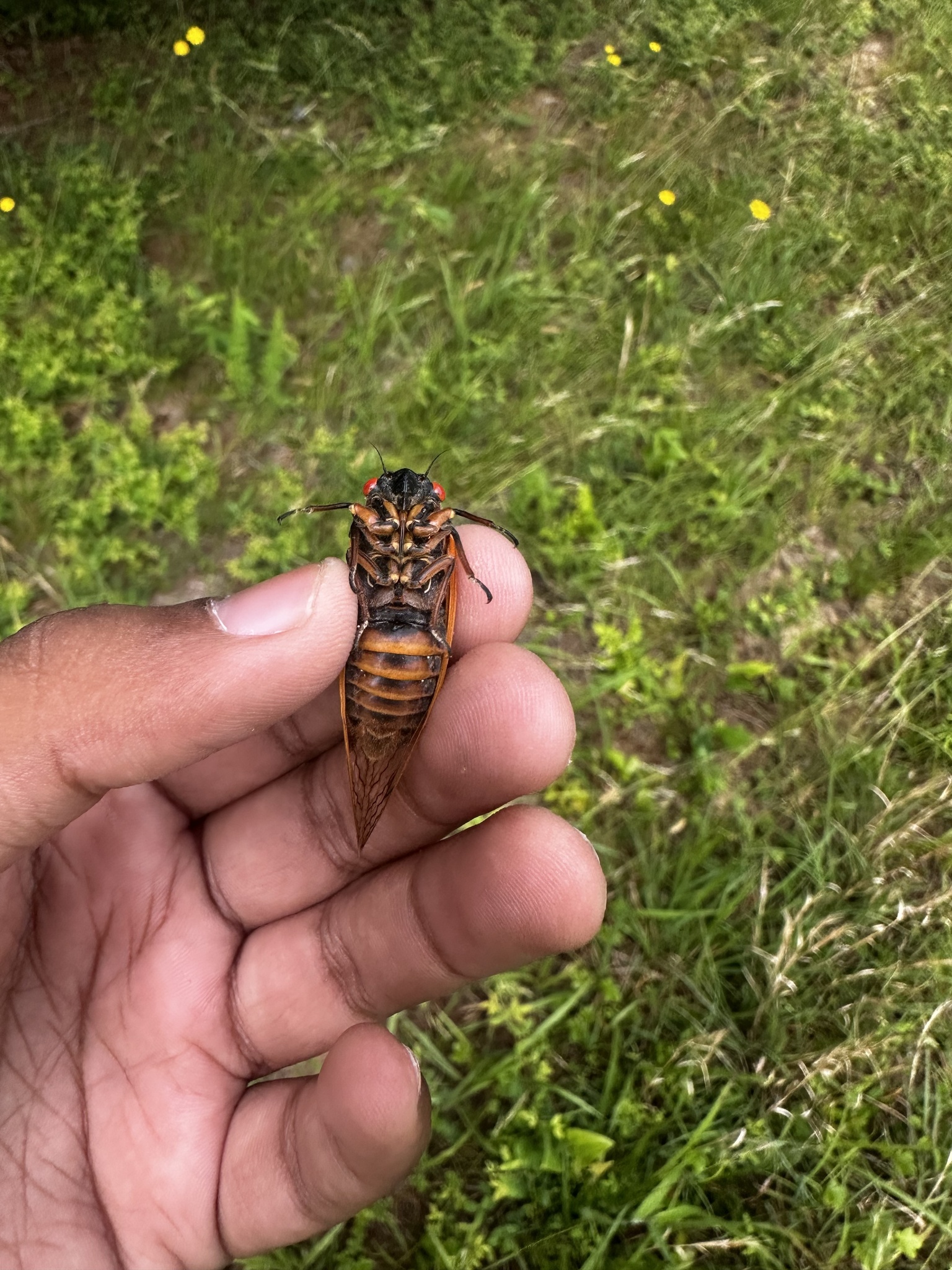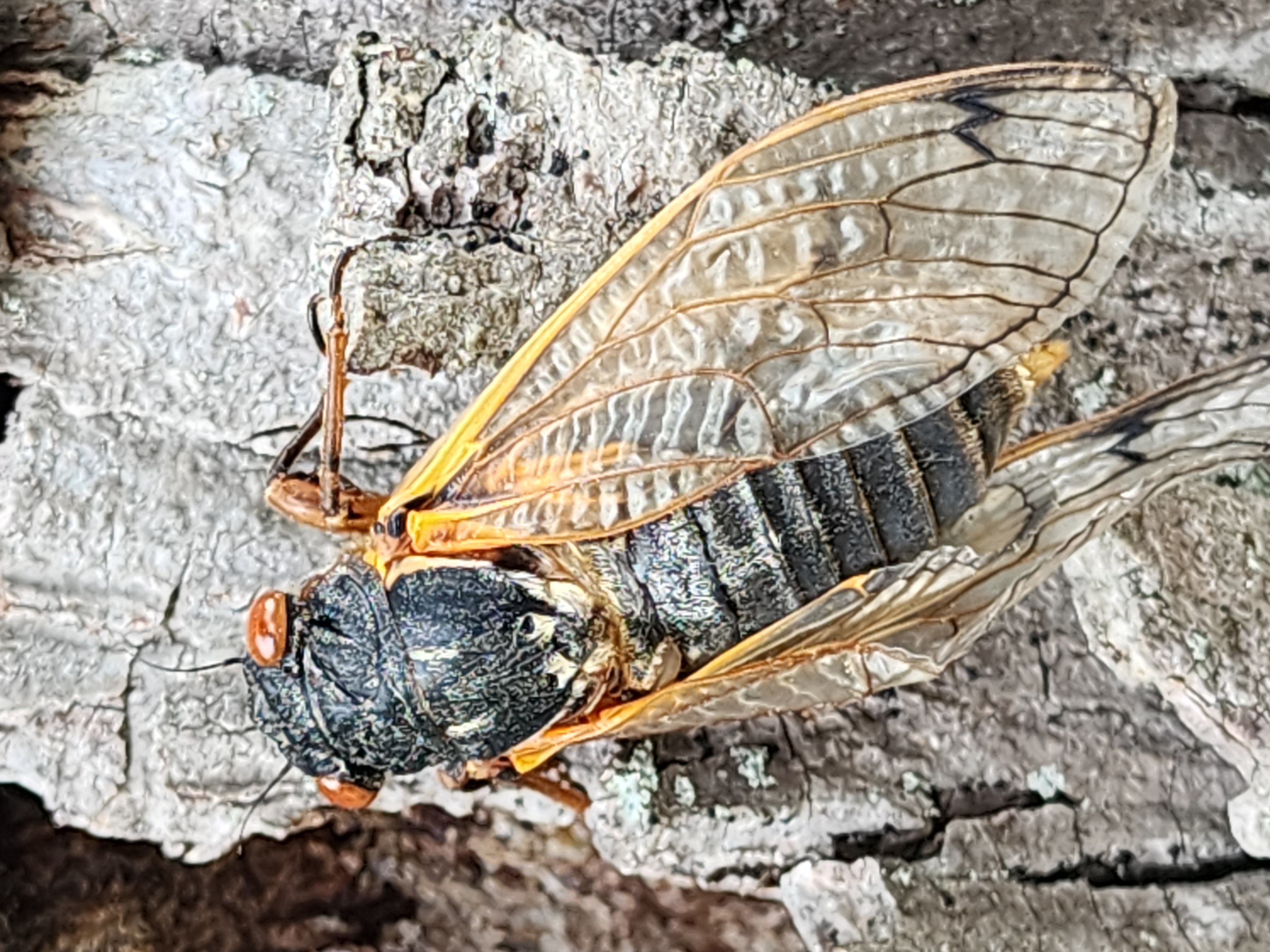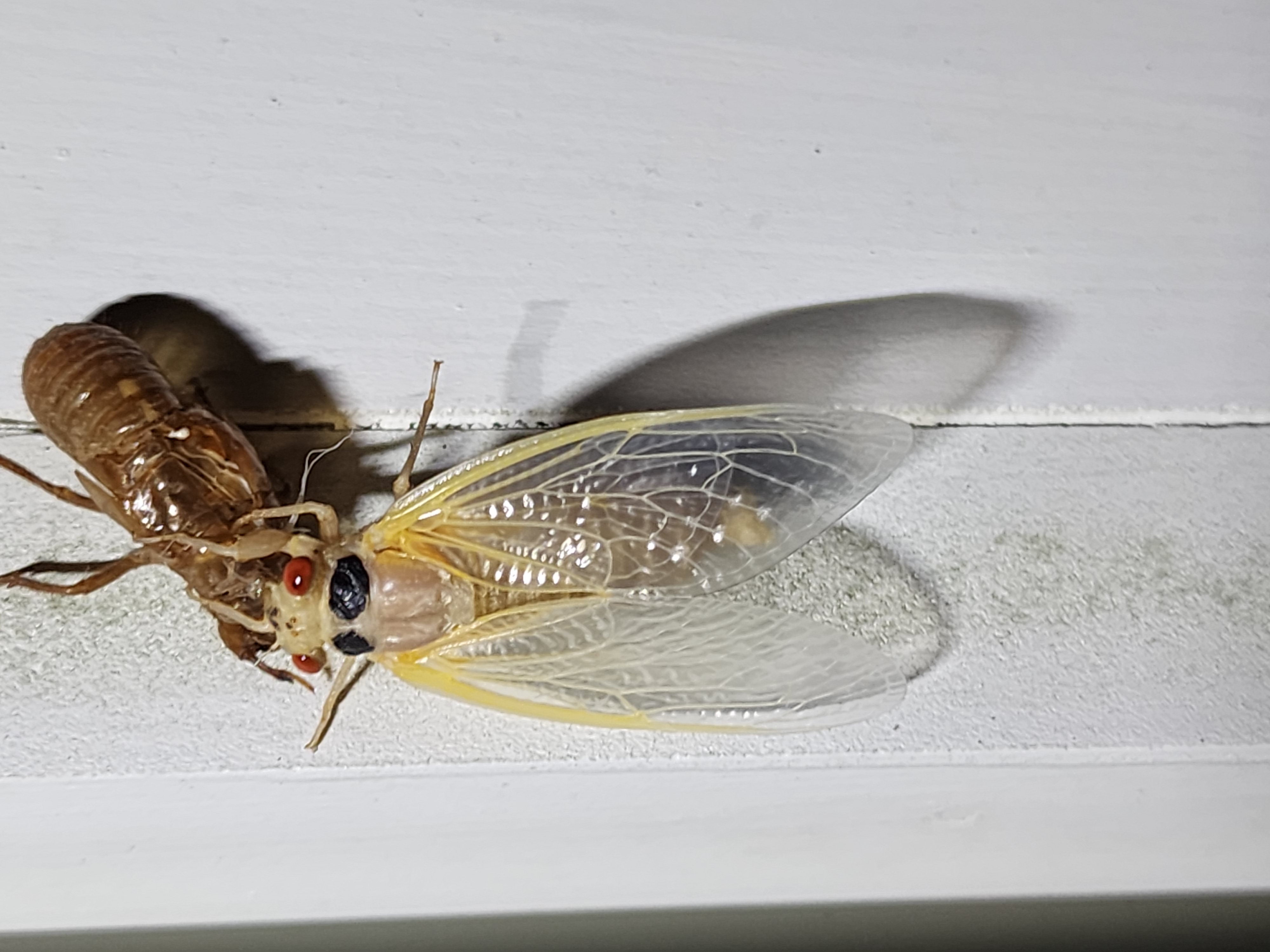Map Snapshot


19 Records
Riley's 13-Year Cicada in St. Mary's Co., Maryland (6/1/2024). No rights reserved. - kdaniel20816 via iNaturalist.
Description
Compare the morphologically similar Pharaoh Cicada, which is a more widespread 17-year species.
Where To Find
Southern St. Mary's County, Maryland.
Seasonality Snapshot
Source: Wikipedia
| Magicicada tredecim | |
|---|---|

| |
| Scientific classification | |
| Domain: | Eukaryota |
| Kingdom: | Animalia |
| Phylum: | Arthropoda |
| Class: | Insecta |
| Order: | Hemiptera |
| Suborder: | Auchenorrhyncha |
| Family: | Cicadidae |
| Genus: | Magicicada |
| Species: | M. tredecim
|
| Binomial name | |
| Magicicada tredecim (Walsh and Riley, 1868)
| |
Magicicada tredecim is a 13-year species of periodical cicada, closely related to the newly discovered 13-year species Magicicada neotredecim, from which it differs in male song pitch, female song pitch preferences, abdomen color, and mitochondrial DNA.[1][2] Both M. tredecim and M. neotredecim are closely related to the 17-year species M. septendecim, which was identified by Linnaeus in 1758; these three species are often grouped together under the name decim periodical cicadas.
Description
[edit]Like other species included in its genus, M. tredicim has reddish eyes and wing veins. Its dorsal thorax is black.[3] The underside of the abdomen of M. tredecim is light orange or caramel colored, lacking the dark bands seen in M. neotredicim and M. septendecim.[4]
Life cycle
[edit]Their median life cycle from egg to natural adult death is around thirteen years. However, their life cycle can range from nine years to seventeen years.[5]
Habitat, distribution, and cicada "broods"
[edit]Magicicada species occur across the southeastern United States. M. tredecim was the first to be described of the four species with a 13-year lifecycle. It has been observed in all of the three extant broods of 13-year cicadas: Brood XIX, Brood XXII, and Brood XXIII.
References
[edit]- ^ "Periodical Cicada Page". University of Michigan. Retrieved 10 June 2011.
- ^ "Magicicada neotredecim Marshall and Cooley 2000". National Geographic Society. Archived from the original on 7 September 2012. Retrieved 10 June 2011.
- ^ Alexander, Richard D; Thomas E. Moore (1962). "The Evolutionary Relationships of 17-Year and 13-Year Cicadas, and Three New Species (Homoptera, Cicadidae, Magicicada)" (PDF). U Michigan Museum of Zoology. Retrieved 9 June 2011.
- ^ "Magicicada tredecim (Walsh and Riley 1868)". National Geographic Society. Archived from the original on 18 August 2012. Retrieved 12 June 2011.
- ^ Campbell, Matthew (18 August 2015). "Genome expansion via lineage splitting and genome reduction in the cicada endosymbiont Hodgkinia - Supporting Information" (PDF). Proceedings of the National Academy of Sciences of the United States of America. 112 (33): 10192–10199. doi:10.1073/pnas.1421386112. PMC 4547289. PMID 26286984. Retrieved 13 October 2020.
External links
[edit]
